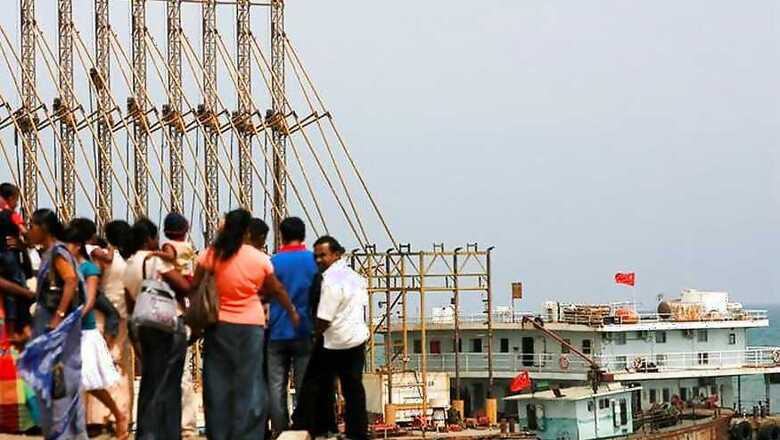
views
New York: China's acquisition of the strategic Hambantota port from Sri Lanka has given it "control of a territory" just a few hundred miles off the shores of India, highlighting its "debt trap" and ambitious use of loans to gain influence around the world, the New York Times has said.
A detailed article in NYT about Sri Lanka's handover of the Hambantota Port to China in December 2017 illustrates how China turned an ally's struggles to its strategic advantage. The report said that feasibility studies had found that the Hambantota port would not work and "frequent lenders" like India had refused to provide loans or assistance for the port, developed during Sri Lanka's president Mahinda Rajapaksa's rule.
"However, every time Rajapaksa turned to his Chinese allies for loans and assistance with the ambitious port project, the answer was yes," it said.
The investigative report said that over years of construction and renegotiation with China Harbor Engineering Company, one of Beijing's largest state-owned enterprises, the Hambantota Port Development Project distinguished itself mostly by failing, as predicted.
At a time when tens of thousands of ships were passing by along one of the world's busiest shipping lanes, the port drew only 34 ships in 2012, it said.
With Rajapaksa being voted out of office in 2015, Sri Lanka's new government struggled to make payments on the debt he had taken on for the port development.
"Under heavy pressure and after months of negotiations with the Chinese, the government handed over the port and 15,000 acres of land around it for 99 years in December last year. The transfer gave China control of territory just a few hundred miles off the shores of a rival, India, and a strategic foothold along a critical commercial and military waterway, the NYT report said.
The case is one of the most vivid examples of China's ambitious use of loans and aid to gain influence around the world and of its willingness to play hardball to collect, the report said.
The report noted that Indian officials feared that Sri Lanka is struggling so much that the Chinese government may be able to dangle debt relief in exchange for its military's use of assets like the Hambantota port.
The final lease agreement however forbids military activity there without Sri Lanka's invitation. "The only way to justify the investment in Hambantota is from a national security standpoint that they will bring the People's Liberation Army in, India's former foreign secretary and national security adviser Shivshankar Menon was quoted as saying in the report.
They approached us for the port at the beginning, and Indian companies said no, said Menon, who served as India's foreign secretary and then its national security adviser as the Hambantota port was being built. It was an economic dud then, and it's an economic dud now.
The investigation is based on months of interviews with Sri Lankan, Indian, Chinese and Western officials and analysis of documents and agreements related to the port project.
NYT said the investigation presented a stark illustration of how China and the companies under its control ensured their interests in a small country hungry for financing.
The debt deal which led Sri Lanka to hand over a strategic port to China also put focus on some of the harshest accusations about President Xi Jinping's signature Belt and Road Initiative: that the global investment and lending programme amounts to a debt trap for vulnerable countries around the world, fueling corruption and autocratic behaviour in struggling democracies.
The Times investigation found during the 2015 Sri Lankan elections, large payments from the Chinese port construction fund flowed directly to campaign aides and activities for Rajapaksa, who had agreed to Chinese terms at every turn and was seen as an important ally in China's efforts to tilt influence away from India in South Asia.
Further, while Chinese officials and analysts have insisted that China's interest in the Hambantota port is purely commercial, Sri Lankan officials said that from the start, the intelligence and strategic possibilities of the port's location were part of the negotiations.
The report said that as Sri Lankan officials became "desperate" to get the debt off their books in recent years, the Chinese demands centered on handing over equity in the port rather than allowing any easing of terms.
"Though the deal erased roughly $1 billion in debt for the port project, Sri Lanka is now in more debt to China than ever, as other loans have continued and rates remain much higher than from other international lenders, it said.
The feasibility of the Hambantota port was questioned from the very start, given that Sri Lanka's strategically important Colombo Port was handling more cargo and had room for expansion. Only 34 ships berthed at Hambantota in 2012, compared with 3,667 ships at the Colombo port.
(With agency inputs)




















Comments
0 comment